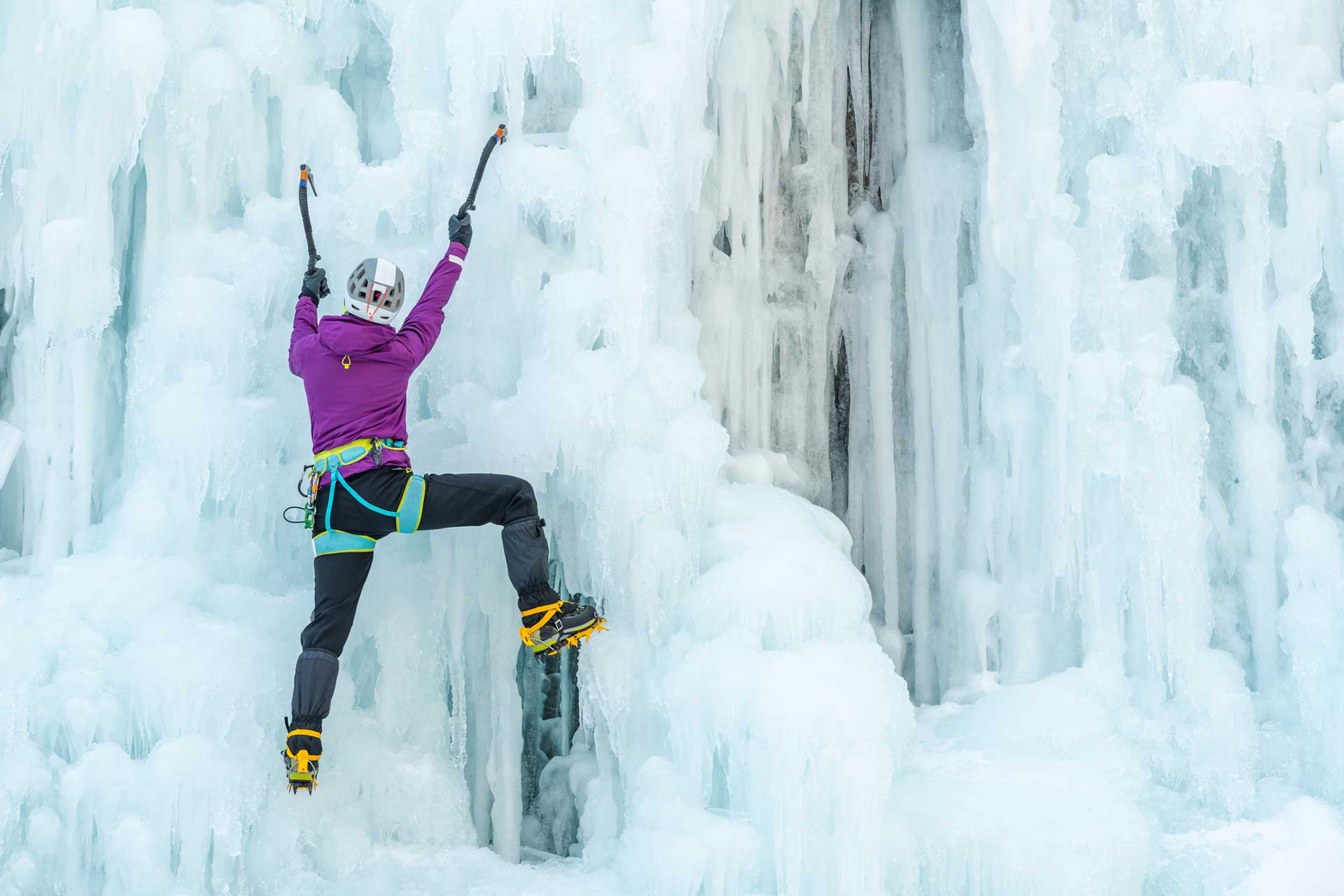Ice climbing is very much like rock climbing, except on ice. You pick a suitably interesting slab of ice and use ice tools to get up however you can. It might seem like you can put your pick anywhere, making it far easier than the finite number of good holds on a rock climb. But in reality, not every placement will hold an ice axe or a crampon point because of the composition of the ice. And some routes are different year on year as the ice freezes and thaws.
It looks even more unlikely and magical than rock climbing. There’s something about knowing that ice isn’t always there. Never mind how impressive huge cascades of ice look, even without a tiny person providing scale. It’s an ephemeral puzzle as much as a sport.

What is ice climbing?
Ice climbing is the ascent of a vertical, or near vertical, sheet of ice. That could be a frozen waterfall or the ice on a snowy mountain crag. Honestly, any type of ice that can support a person’s weight is up for grabs. You can even get lowered down into a circular tunnel inside a glacier, to climb back up again. Thanks to the nature of ice and the world’s weather, some routes are consistently in season year on year. Others are less reliable or offer once in a lifetime ascents for a handful of lucky climbers, in the right place at the right time.
Mechanically, ice climbing is very similar to rock climbing. You’re using your arms and legs to climb things on or near vertical. The main difference is that you don’t look for hand and foot holds in existing rock. Rather, you’re creating or finding them using metal spikes: ice tools and crampons. As with rock climbing, you can ice climb in pairs – one leading, the other seconding and belaying for each other. Or you might be soloing or simply be top-roped without any gear placement required. More on how rock climbing gear translates to ice in a moment.
As for how you physically ice climb, you’re slowly but surely making your way up a vertical sheet of ice, using four points of contact. Typically you’ll want to keep three points still while you find a good position for the next one. Once you’ve got your axes as high as you can, using the pattern foot, foot, hand, hand is pretty common. If you keep your arms straight you’ll reduce muscle fatigue… well that’s the theory! It goes without saying, ice climbing is a pretty strenuous activity, however easy the pros make it look.




